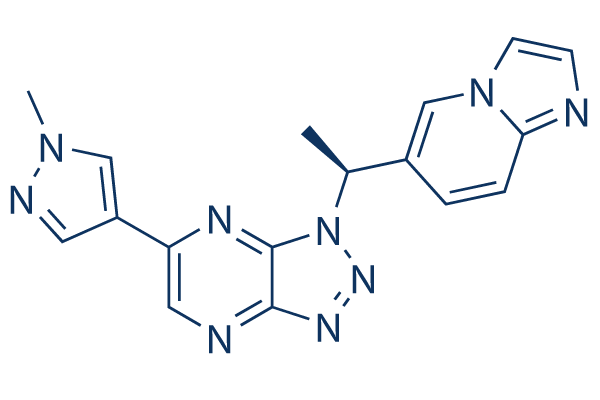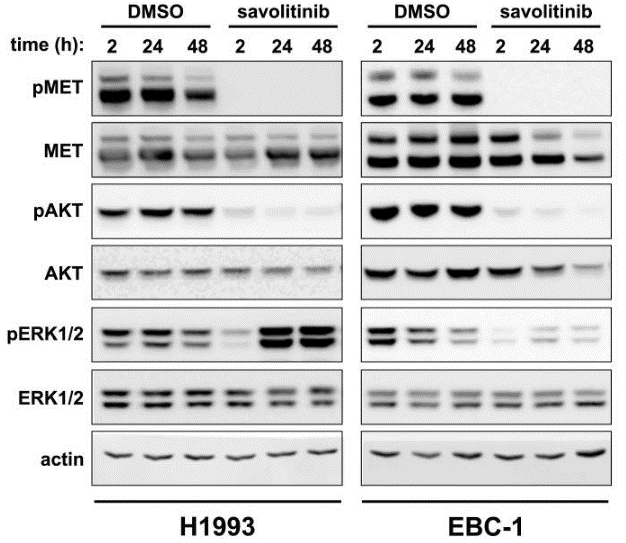
- Bioactive Compounds
- By Signaling Pathways
- PI3K/Akt/mTOR
- Epigenetics
- Methylation
- Immunology & Inflammation
- Protein Tyrosine Kinase
- Angiogenesis
- Apoptosis
- Autophagy
- ER stress & UPR
- JAK/STAT
- MAPK
- Cytoskeletal Signaling
- Cell Cycle
- TGF-beta/Smad
- DNA Damage/DNA Repair
- Compound Libraries
- Popular Compound Libraries
- Customize Library
- Clinical and FDA-approved Related
- Bioactive Compound Libraries
- Inhibitor Related
- Natural Product Related
- Metabolism Related
- Cell Death Related
- By Signaling Pathway
- By Disease
- Anti-infection and Antiviral Related
- Neuronal and Immunology Related
- Fragment and Covalent Related
- FDA-approved Drug Library
- FDA-approved & Passed Phase I Drug Library
- Preclinical/Clinical Compound Library
- Bioactive Compound Library-I
- Bioactive Compound Library-Ⅱ
- Kinase Inhibitor Library
- Express-Pick Library
- Natural Product Library
- Human Endogenous Metabolite Compound Library
- Alkaloid Compound LibraryNew
- Angiogenesis Related compound Library
- Anti-Aging Compound Library
- Anti-alzheimer Disease Compound Library
- Antibiotics compound Library
- Anti-cancer Compound Library
- Anti-cancer Compound Library-Ⅱ
- Anti-cancer Metabolism Compound Library
- Anti-Cardiovascular Disease Compound Library
- Anti-diabetic Compound Library
- Anti-infection Compound Library
- Antioxidant Compound Library
- Anti-parasitic Compound Library
- Antiviral Compound Library
- Apoptosis Compound Library
- Autophagy Compound Library
- Calcium Channel Blocker LibraryNew
- Cambridge Cancer Compound Library
- Carbohydrate Metabolism Compound LibraryNew
- Cell Cycle compound library
- CNS-Penetrant Compound Library
- Covalent Inhibitor Library
- Cytokine Inhibitor LibraryNew
- Cytoskeletal Signaling Pathway Compound Library
- DNA Damage/DNA Repair compound Library
- Drug-like Compound Library
- Endoplasmic Reticulum Stress Compound Library
- Epigenetics Compound Library
- Exosome Secretion Related Compound LibraryNew
- FDA-approved Anticancer Drug LibraryNew
- Ferroptosis Compound Library
- Flavonoid Compound Library
- Fragment Library
- Glutamine Metabolism Compound Library
- Glycolysis Compound Library
- GPCR Compound Library
- Gut Microbial Metabolite Library
- HIF-1 Signaling Pathway Compound Library
- Highly Selective Inhibitor Library
- Histone modification compound library
- HTS Library for Drug Discovery
- Human Hormone Related Compound LibraryNew
- Human Transcription Factor Compound LibraryNew
- Immunology/Inflammation Compound Library
- Inhibitor Library
- Ion Channel Ligand Library
- JAK/STAT compound library
- Lipid Metabolism Compound LibraryNew
- Macrocyclic Compound Library
- MAPK Inhibitor Library
- Medicine Food Homology Compound Library
- Metabolism Compound Library
- Methylation Compound Library
- Mouse Metabolite Compound LibraryNew
- Natural Organic Compound Library
- Neuronal Signaling Compound Library
- NF-κB Signaling Compound Library
- Nucleoside Analogue Library
- Obesity Compound Library
- Oxidative Stress Compound LibraryNew
- Plant Extract Library
- Phenotypic Screening Library
- PI3K/Akt Inhibitor Library
- Protease Inhibitor Library
- Protein-protein Interaction Inhibitor Library
- Pyroptosis Compound Library
- Small Molecule Immuno-Oncology Compound Library
- Mitochondria-Targeted Compound LibraryNew
- Stem Cell Differentiation Compound LibraryNew
- Stem Cell Signaling Compound Library
- Natural Phenol Compound LibraryNew
- Natural Terpenoid Compound LibraryNew
- TGF-beta/Smad compound library
- Traditional Chinese Medicine Library
- Tyrosine Kinase Inhibitor Library
- Ubiquitination Compound Library
-
Cherry Picking
You can personalize your library with chemicals from within Selleck's inventory. Build the right library for your research endeavors by choosing from compounds in all of our available libraries.
Please contact us at info@selleckchem.com to customize your library.
You could select:
- Antibodies
- Bioreagents
- qPCR
- 2x SYBR Green qPCR Master Mix
- 2x SYBR Green qPCR Master Mix(Low ROX)
- 2x SYBR Green qPCR Master Mix(High ROX)
- Protein Assay
- Protein A/G Magnetic Beads for IP
- Anti-Flag magnetic beads
- Anti-Flag Affinity Gel
- Anti-Myc magnetic beads
- Anti-HA magnetic beads
- Poly DYKDDDDK Tag Peptide lyophilized powder
- Protease Inhibitor Cocktail
- Protease Inhibitor Cocktail (EDTA-Free, 100X in DMSO)
- Phosphatase Inhibitor Cocktail (2 Tubes, 100X)
- Cell Biology
- Cell Counting Kit-8 (CCK-8)
- Animal Experiment
- Mouse Direct PCR Kit (For Genotyping)
- New Products
- Contact Us
research use only
Savolitinib (AZD6094) c-Met inhibitor
Savolitinib (Volitinib, AZD6094, HMPL-504) is a novel, potent, and selective MET inhibitor currently in clinical development in various indications, including PRCC. The IC50 values of this compound for c-Met and p-Met are 5 nM and 3 nM, respectively. It shows exquisite selectivity for c-Met over 274 kinase.

Chemical Structure
Molecular Weight: 345.36
Purity & Quality Control
Batch:
Purity:
99.95%
99.95
Related Products
| Related Products | SGX-523 Foretinib PHA-665752 SU11274 BMS-777607 JNJ-38877605 Tivantinib PF-04217903 Tepotinib MGCD-265 analog Golvatinib (E7050) Merestinib (LY2801653) MK-2461 NPS-1034 AMG 337 Sodium L-ascorbyl-2-phosphate NVP-BVU972 BMS-794833 S49076 | Click to Expand |
|---|---|---|
| Related Compound Libraries | Kinase Inhibitor Library Tyrosine Kinase Inhibitor Library PI3K/Akt Inhibitor Library Cell Cycle compound library Angiogenesis Related compound Library | Click to Expand |
Signaling Pathway
Cell Culture and Working Concentration
| Cell Lines | Assay Type | Concentration | Incubation Time | Formulation | Activity Description | PMID |
|---|---|---|---|---|---|---|
| NCI-H441 | Function assay | 1 h | Inhibition of c-Met autophosphorylation in human NCI-H441 cells for 1 hr by ELISA, IC50=0.003 μM | 25148209 | ||
| NCI-H441 | Proliferation assay | 72 h | Antiproliferative activity against human NCI-H441 cells assessed as HGF-induced proliferation after 72 hrs by MTT assay, IC50=0.006 μM | 25148209 | ||
| Click to View More Cell Line Experimental Data | ||||||
Mechanism of Action
| Targets |
|
|---|
In vitro |
||||
| In vitro | Volitinib has exquisite kinase selectivity and excellent potency[1]. Volitinib displays a highly selective profile across a gastric cell line panel, potently inhibiting cell growth only in those lines with dysregulated cMET (EC50 values 0.6 nM/L-12.5 nM/L)[2]. Volitinib has high membrane permeability without efflux transport across Caco-2 cell monolayer and exhibits negligible P-gp inhibition (IC50 > 17 μM). Volitinib shows no significant reversible or mechanism-based CYP inhibition in human liver microsomes, and no induction of CYP1A2 and CYP3A4 in human hepatocytes[3]. |
|||
|---|---|---|---|---|
| Cell Research | Cell lines | NCI-H441 cells | ||
| Concentrations | -- | |||
| Incubation Time | 1 h | |||
| Method | NCI-H441 cells are plated at a density of 15,000 cells/well in RPMI-1640 medium with 10% FBS in 96-well plates. After incubation overnight, cells are then treated with serially diluted test compounds at 37 ℃ for 1 h. Then the medium is removed, and cells are lysed in 100 μL/well lysis buffer.The plates containing cell lysate are kept at -80℃ overnight. The next day, the plates are thawed on ice, mixed gently. 25 μL/well of lysates are added into the assay plates pre-coated with anti-p-Met antibody to detect p-c-Met signal. p-c-Met level is determined at 450 nm and 570 nm. |
|||
| Experimental Result Images | Methods | Biomarkers | Images | PMID |
| Western blot | pMET / MET / pAKT / AKT / pERK / ERK |

|
27472392 | |
| Growth inhibition assay | Cell viability |

|
27472392 | |
In Vivo |
||
| In vivo | In a mouse pharmacokinetic study (male ICR mice), the clearance of the compound is 4.28 L/(h·kg) and the half-time is 1.7 h. Despite its moderate oral bioavailability (F = 27.2%), the overall plasma exposure is much higher. Volitinib demonstrates dose-dependent tumor growth inhibition in a U87MG subcutaneous xenograft model[1]. Its treatment leads to pharmacodynamic modulation of c-MET signaling and potent tumor stasis in 3/3 cMET-dysregulated gastric cancer patient-derived tumor xenograft models, but has negligible activity in a gastric cancer control model[2]. Volitinib has moderate plasma protein binding rate (60%∼70% in rat, dog, and human; 40% in mouse; 80% in monkey) and exhibits wide distribution to different organs in rat, with high exposures in liver and kidney, very low in brain, spinal cord and testis compared to the plasma level. In PK studies in mouse, rat and dog, Volitinib shows the rapid oral absorption (Tmax<2.5 h) with high exposures and the acceptable bioavailability at 27.2%, 42.6% and 86.3%, respectively. The in vivo clearance (CL) is 11.0, 11.8 and 3.5 mL/min/kg in mouse, rat and dog, respectively, revealing a low extraction ratio. The volume of distribution in steady state (Vss) is 0.4, 1.4 and 1.4 L/kg in those species, respectively, indicating a moderate to low distribution pattern. Volitinib also displays linear pharmacokinetics (PK) in the dose ranges of 1 to 25 mg/kg in rat and 2 to 10 mg/kg in dog. Food hardly affects its PK profile in dog. In contrast, volitinib in monkey shows a notably high extraction ratio (CL=17.2 mL/min/kg) consistent with the in vitro metabolism result. Considering the rapid absorption of volitinib (Tmax=1.9 h) and moderately low distribution (Vss=0.7 L/kg), the poor oral bioavailability (1.9%) of volitinib in monkey is considered to be the result of excessive first-pass extraction. Overall, volitinib exhibits favorable preclinical PK/ADME properties[3]. |
|
|---|---|---|
| Animal Research | Animal Models | Female athymic mice |
| Dosages | 1.0, 2.5 and 10.0 mg/kg (oral); 2.5 mg/kg (i.v.) | |
| Administration | oral administration/i.v. | |
| NCT Number | Recruitment | Conditions | Sponsor/Collaborators | Start Date | Phases |
|---|---|---|---|---|---|
| NCT05888207 | Completed | Healthy Male Subjects |
AstraZeneca|Parexel |
June 2 2023 | Phase 1 |
| NCT05043090 | Recruiting | Papillary Renal Cell Carcinoma |
AstraZeneca |
October 28 2021 | Phase 3 |
| NCT04606771 | Active not recruiting | Non-Small Cell Lung Cancer |
AstraZeneca |
September 28 2020 | Phase 2 |
References |
|
Chemical Information
| Molecular Weight | 345.36 | Formula | C17H15N9 |
| CAS No. | 1313725-88-0 | SDF | Download SDF |
| Synonyms | HMPL-504, Volitinib | ||
| Smiles | CC(C1=CN2C=CN=C2C=C1)N3C4=NC(=CN=C4N=N3)C5=CN(N=C5)C | ||
Storage and Stability
| Storage (From the date of receipt) | |||
|
In vitro |
DMSO : 69 mg/mL ( (199.79 mM) Moisture-absorbing DMSO reduces solubility. Please use fresh DMSO.) Water : Insoluble Ethanol : Insoluble |
Molecular Weight Calculator |
|
In vivo Add solvents to the product individually and in order. |
In vivo Formulation Calculator |
|||||
Preparing Stock Solutions
Molarity Calculator
In vivo Formulation Calculator (Clear solution)
Step 1: Enter information below (Recommended: An additional animal making an allowance for loss during the experiment)
mg/kg
g
μL
Step 2: Enter the in vivo formulation (This is only the calculator, not formulation. Please contact us first if there is no in vivo formulation at the solubility Section.)
% DMSO
%
% Tween 80
% ddH2O
%DMSO
%
Calculation results:
Working concentration: mg/ml;
Method for preparing DMSO master liquid: mg drug pre-dissolved in μL DMSO ( Master liquid concentration mg/mL, Please contact us first if the concentration exceeds the DMSO solubility of the batch of drug. )
Method for preparing in vivo formulation: Take μL DMSO master liquid, next addμL PEG300, mix and clarify, next addμL Tween 80, mix and clarify, next add μL ddH2O, mix and clarify.
Method for preparing in vivo formulation: Take μL DMSO master liquid, next add μL Corn oil, mix and clarify.
Note: 1. Please make sure the liquid is clear before adding the next solvent.
2. Be sure to add the solvent(s) in order. You must ensure that the solution obtained, in the previous addition, is a clear solution before proceeding to add the next solvent. Physical methods such
as vortex, ultrasound or hot water bath can be used to aid dissolving.
Tech Support
Answers to questions you may have can be found in the inhibitor handling instructions. Topics include how to prepare stock solutions, how to store inhibitors, and issues that need special attention for cell-based assays and animal experiments.
Tel: +1-832-582-8158 Ext:3
If you have any other enquiries, please leave a message.
* Indicates a Required Field






































